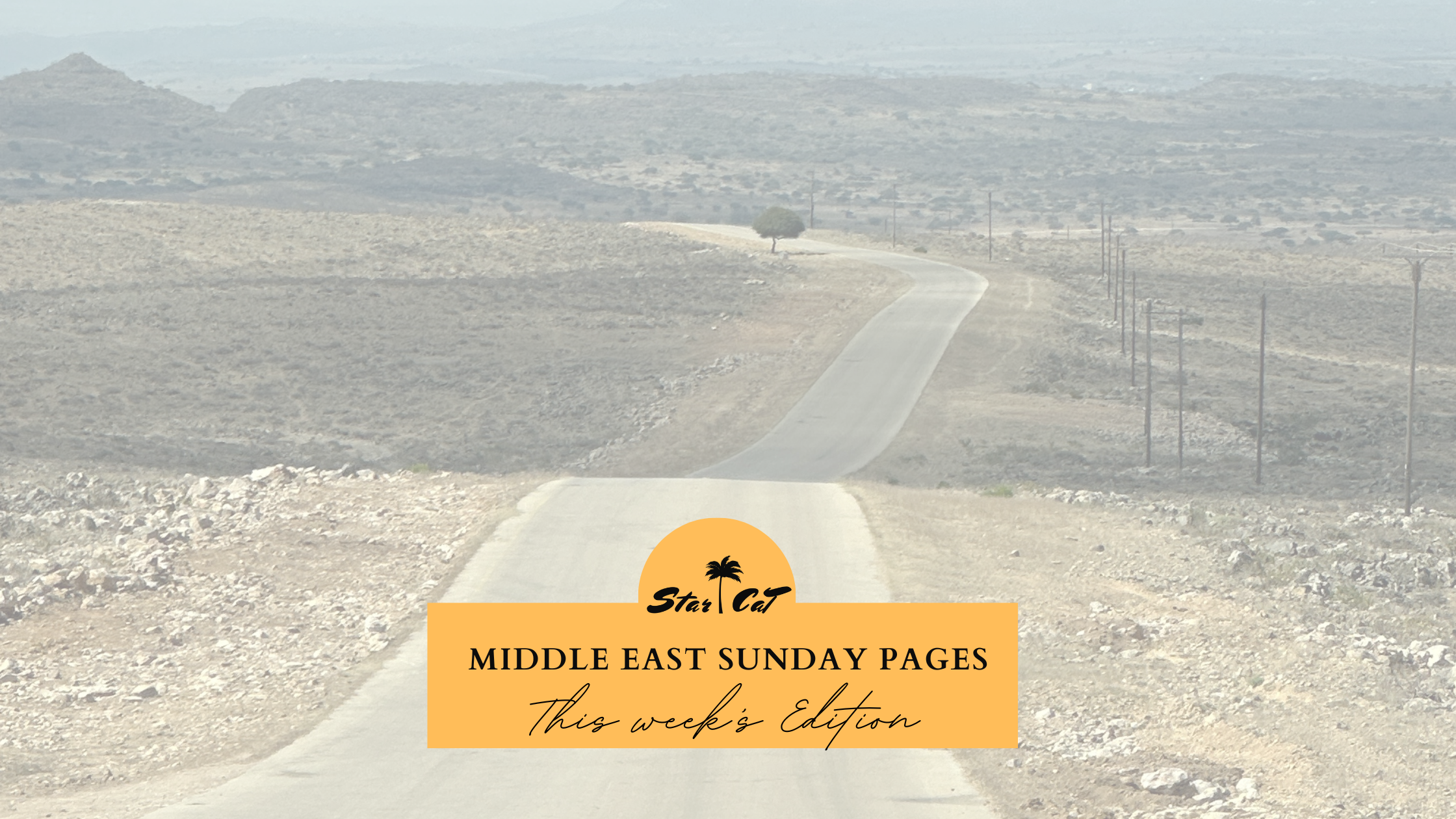
Oman: A Strategic Gateway to Global Trade and Diversified Growth
The Sultanate of Oman occupies a unique position at the crossroads of major international trade routes, strategically situated along the southeastern coast of the Arabian Peninsula. Known for its political stability, rich cultural heritage, and abundant natural resources, Oman is steadily transitioning from an economy heavily reliant on oil exports to one diversified across various innovative sectors. With a population of approximately 5.05 million and a GDP of $108.8 billion as of 2023, Oman maintains a GDP per capita of roughly $21,549.84, reflecting substantial economic potential and stability. This report explores in-depth Oman’s comprehensive economic vision, key trade agreements, distinctive approach among Gulf Cooperation Council (GCC) nations, sovereign wealth funds, and significant investments in burgeoning sectors such as space technology, tourism, cryptocurrency mining, and maritime logistics.
Economic Structure and Oman Vision 2040
Oman Vision 2040 outlines the nation’s ambitious plans for sustainable economic growth, prioritising economic diversification away from hydrocarbon dependency. Understanding the finite nature of oil reserves, the Omani government has proactively established initiatives across several sectors, including logistics, tourism, manufacturing, mining, fisheries, renewable energy, and technological innovation. Emphasis is placed on public-private partnerships (PPP), foreign direct investments (FDI), and enhanced regulatory frameworks to cultivate a business-friendly environment that attracts international investors.
Under Vision 2040, Oman aims to enhance its non-oil sector contributions significantly, thereby creating employment opportunities, supporting SME growth, and fostering a resilient economy capable of withstanding global economic shifts. The vision also promotes human capital development through education, vocational training, and workforce skill enhancement, recognising the critical role of skilled labor in economic transformation.
Free Trade Agreements: Strengthening International Integration
U.S.-Oman Free Trade Agreement (FTA)
Effective since January 2009, the U.S.-Oman FTA has significantly enhanced bilateral trade by offering duty-free access to nearly all Omani industrial and consumer products entering the U.S. market. Beyond reducing tariffs, this comprehensive agreement also addresses essential economic aspects such as intellectual property protection, labor standards, and environmental regulations. As a result, Oman has become an ideal hub for Asian businesses aiming to access the U.S. market efficiently, leveraging its stable economic and political environment, strategic geographic position, and robust logistics infrastructure.
Prospective India-Oman Free Trade Agreement
Currently under negotiation and expected to conclude by late 2025, the India-Oman FTA promises substantial growth in economic relations between the two countries. Once finalised, this agreement aims to increase trade flows significantly, attract Indian investments in Omani sectors such as mining, logistics, and infrastructure, and enhance exports from Oman to the wider Indian subcontinent. This agreement uniquely positions Oman as a critical logistics and commercial corridor, allowing Asian enterprises, particularly from India, to utilise Oman as a platform for tariff-free or reduced-tariff exports to the expansive U.S. market.
Singapore-GCC Free Trade Agreement
The Singapore-GCC FTA, in force since September 2013, facilitates significant tariff reductions and streamlined customs processes between Singapore and GCC nations, including Oman. This agreement enhances Oman’s attractiveness as a transit and re-export hub, offering Singaporean and broader ASEAN-based businesses a competitive pathway to access the lucrative U.S. market through Oman’s duty-free status under the U.S.-Oman FTA.
GCC-EFTA Free Trade Agreement
Effective since July 2014, the GCC-EFTA (which includes Switzerland, Norway, Iceland, and Liechtenstein) provides substantial tariff reductions and trade facilitation measures. For Swiss enterprises and businesses from other EFTA countries, Oman offers a strategic entry point for Asian operations, enabling seamless integration into the global supply chain and facilitating efficient, tariff-advantaged export to the U.S. market.
GCC-New Zealand Free Trade Agreement
Concluded in late 2024, the GCC-New Zealand FTA immediately grants tariff-free access for more than half of New Zealand’s exports to GCC countries, including Oman, and plans to eliminate tariffs on 99% of goods progressively over a decade.
Collectively, these trade agreements underscore Oman’s strategic role as an essential logistics and trade hub, enabling Asian businesses to efficiently penetrate and expand within the United States and broader international markets.
Distinctive Characteristics of Oman within the GCC
Oman stands apart within the GCC by virtue of its distinct foreign policy emphasising neutrality and diplomacy. Unlike its neighbours, Oman traditionally avoids regional conflicts, instead positioning itself as a mediator fostering dialogue and peaceful solutions. Economically, it has avoided rapid urbanisation typified by cities like Dubai or excessive dependency on oil similar to Saudi Arabia. Oman’s governance approach stresses balanced development, sustainable resource management, gradual modernisation, and decentralisation of economic activities.
Oman’s geographical advantage, notably its location outside the Strait of Hormuz, offers significant strategic maritime leverage. Additionally, Oman’s diverse demographic composition and cultural openness facilitates international collaboration, tourism, and multicultural business environments, enhancing its competitive edge within the GCC. In order to take business seriously and understand the finer details of Oman, get our Gulf Etiquette Success Playbook here.
Sovereign Wealth Funds and Economic Development
Oman Investment Authority (OIA) The Oman Investment Authority manages Oman’s sovereign wealth, overseeing two primary investment vehicles:
- Future Generations Fund (FGF): This fund strategically allocates resources into international markets, ensuring long-term wealth preservation and financial stability for future Omani generations.
- National Development Fund: Targeting domestic economic growth, this fund invests heavily in local infrastructure projects, industrial development zones, and SMEs, significantly contributing to domestic economic resilience and job creation.
Future Fund Oman Established in 2024 with an initial capitalisation of $5.2 billion, the Future Fund Oman aims at accelerating foreign direct investment and boosting local entrepreneurship. The fund specifically targets innovative sectors and high-growth SMEs, providing critical financial support and strategic investments to ensure sustained economic diversification.
Invest Oman Initiative Under the Ministry of Commerce, Industry, and Investment Promotion, Invest Oman simplifies investment processes, offering comprehensive assistance for licensing, regulatory compliance, land allocation, and facilitating investor inquiries. It represents a strategic initiative by the Omani government to streamline and expedite investment procedures, thereby attracting and sustaining foreign and local investment.
ITHCA Group is a key enabler of Oman’s Vision 2040 and is the government’s strategic investment arm for digital infrastructure and ICT transformation. With major projects in cloud computing, cybersecurity, artificial intelligence, and data centres, ITHCA ensures the digital readiness required to support a globally competitive, innovation-driven economy. In parallel with OIA and Future Fund Oman, ITHCA plays a vital role in creating an ecosystem that supports investment across digital sectors, empowering both domestic startups and international investors with the technological foundation to scale in and through Oman.
The Oman American Business Council (OABC) complements these national efforts by actively connecting international investors — from, but not exclusively from, the United States — with opportunities in Oman. As the official affiliate of the U.S. Chamber of Commerce, OABC plays a pivotal role in trade facilitation, B2B matchmaking, FTA advisory, and investor readiness. Its programs, strategic partnerships, and deep network across government and private sector entities make OABC a key partner for companies navigating Oman’s business landscape.
Together, these entities form a cohesive ecosystem for investment: one that is capitalized, connected, and focused on long-term value creation. Whether entering Oman to launch a startup, scale a regional operation, or form a joint venture, investors can expect not just funding — but alignment, infrastructure, and real momentum.
Emerging Sectors Fuelling Economic Transformation
Space Sector Development: Oman’s burgeoning space industry is anchored by projects such as the Etlaq Spaceport near Duqm, which positions the country firmly within the global space economy. Scheduled commercial rocket launches starting in 2025 mark Oman’s entry into aerospace, attracting global technological partnerships and significant investments. These initiatives also aim to stimulate local innovation, enhance scientific research capabilities, and create specialised employment opportunities.
Cryptocurrency and Digital Infrastructure: In 2023, Oman inaugurated a significant $370 million data hosting and cryptocurrency mining facility in the Salalah Free Zone, marking a pivotal step in its ambition to become a regional digital finance hub. Developed by Exahertz International, a subsidiary of Afaaq for Advanced Technologies, the centre initially operates with around 11 MW of capacity and over 2,000 mining machines, with plans to scale up to 15,000 machines by October 2023. This facility is part of a broader strategy to expand blockchain infrastructure across Oman, including additional centres in Salalah and other regions.
Green Hydrogen and Renewable Energy: Oman is rapidly emerging as a regional leader in green hydrogen production, capitalising on its vast solar and wind resources. Backed by international consortiums and sovereign funds, multi-billion-dollar projects are underway to produce green hydrogen for both domestic use and global export. These initiatives align with Oman’s climate commitments and Vision 2040 goals, establishing the country as a clean energy powerhouse. By building export-oriented hydrogen infrastructure, Oman positions itself as a key supplier to European and Asian markets, driving industrial decarbonisation while stimulating new sectors such as green logistics, electrolyzer manufacturing, and ammonia production. This month, Oman launched its 3rd auction round for green hydrogen projects in Duqm. You can find the article here.
Mining and minerals: Oman’s mining sector is a vital and growing part of its economy, supported by strategic government initiatives under Vision 2040. The sector benefits from progressive legislation, such as the 2019 Mineral Wealth Law, which extended mining licenses, introduced flexible royalties, and strengthened regulatory oversight. Oman boasts significant deposits of minerals including copper, chromite, gypsum, silica, coal, and industrial minerals like marble and limestone. The government promotes sustainable mining practices, environmental protection, and international partnerships to enhance technical capabilities and attract investment. Key projects include copper mining expansions and the establishment of the Oman Minerals Trading Company to centralise mineral exports and improve market transparency. Despite challenges like fluctuating mineral prices and environmental concerns, Oman’s mining industry is poised for sustainable growth, increased value addition, and stronger integration into global markets.
Tourism Development: A Nationwide Strategy Rooted in Nature, Heritage, and Experience
Tourism is a central pillar of Oman’s Vision 2040, and while Salalah remains a flagship destination — known for its lush monsoon season, cool mountain air, and stunning coastline — the country’s tourism vision stretches well beyond Dhofar. Oman is steadily building a multi-regional tourism economy that celebrates the nation’s natural beauty, rich heritage, and diverse geography. Salalah was part of a previous blog post about Summer Escapes in the Gulf.
Across the country, distinct regions are emerging as destinations in their own right. Muscat, the capital, offers cultural immersion alongside coastal elegance, with iconic landmarks like the Sultan Qaboos Grand Mosque, heritage hotels in old merchant homes, art galleries, and thriving souqs. It is a gateway city designed for travelers seeking authenticity, not artifice.
In the Hajar Mountains, especially Jebel Akhdar and Jebel Shams, Oman is building a name for eco-conscious, high-end adventure. Guests can stargaze from cliffside terraces, hike through terraced villages, or stay in sustainable luxury resorts nestled among pomegranate farms and juniper forests. Meanwhile, Musandam’s dramatic fjords and remote villages make it a natural haven for kayaking, dhow tours, and marine eco-tourism — an ideal setting for soft adventure and nature-based experiences.
More quietly, agritourism and heritage restoration projects are gaining traction across Oman’s rural interior. Traditional mudbrick homes, falaj irrigation systems, and old date farms are being transformed into intimate guest experiences that preserve Omani culture and invite visitors to live it firsthand. These initiatives are often developed in partnership with local communities, ensuring tourism directly supports jobs, SMEs, and the preservation of rural life.
But here’s the reality: Oman’s potential in tourism is still largely untapped. The infrastructure is in place, the investor policies are welcoming, the experiences are authentic — but the field remains open. Unlike saturated regional markets, Oman has minimal competition for developers who want to lead in over-water villas, luxury desert camps, adventure lodges, heritage restoration, agritourism farms, wellness retreats, or off-grid nature resorts.
“This isn’t a red ocean. Oman is a blank canvas — and the country is actively looking for visionary tourism partners to help shape the next chapter.”
With streamlined licensing, PPP options, land allocation, and support from entities like the Ministry of Heritage and Tourism and Oman Investment Authority, the door is wide open for global players to enter now — before the sector reaches full maturity.
Oman offers more than postcard beauty. It offers identity, depth, and story — and a rare opportunity for investors to co-create the future of tourism in a region craving authenticity. For those with bold ideas and long-term vision, Oman is ready.
Oman’s Free and Economic Zones: Strategic Gateways for Trade and Investment
Oman’s free and economic zones are integral to its broader strategy of economic diversification and trade facilitation under Vision 2040. Major zones include the Salalah Free Zone, Khazaen Economic Zone, Sohar Free Zone, Duqm Special Economic Zone, and Al Mazunah Free Zone. These zones offer highly attractive benefits to investors, such as 100% foreign ownership, long-term tax holidays (up to 30 years), customs duty exemptions on imports of equipment and raw materials, and full repatriation of profits and capital. The regulatory environment within these zones is streamlined to minimise bureaucratic barriers and enhance ease of doing business, particularly for international companies seeking regional access.
Geographically, these zones are strategically located near Oman’s major maritime ports, forming a powerful logistics ecosystem that links the Gulf to global trade routes. The Salalah Free Zone, adjacent to one of the world’s most efficient transshipment ports, serves as a natural gateway to East Africa and the Indian subcontinent. Duqm SEZAD is rapidly evolving into a regional industrial and maritime hub, equipped with its own dry dock and multipurpose port. Sohar Free Zone benefits from integrated industrial infrastructure and proximity to the UAE border, while Al Mazunah, near Yemen, is designed to facilitate cross-border trade. These zones are further empowered by Oman’s trade agreements, most notably the U.S.–Oman Free Trade Agreement, which allows qualifying goods produced in these zones to enter the U.S. market duty-free, creating a strong incentive for export-oriented manufacturing and assembly operations.
Port Infrastructure and Maritime Logistics
Port of Salalah:
It is recognised globally as a leading maritime logistics hub, ranked as the world’s second most efficient port by the World Bank in 2022. Strategically positioned along major global shipping routes, the port offers direct maritime connections to major international markets, including the United States, and supports extensive transshipment operations. Continuous investment in port infrastructure, technological enhancements, and operational efficiencies underscores its critical role in Oman’s logistic capabilities. The Port of Salalah is one of four Secure Freight Initiative operations scanning cargo bound for the United States on a limited basis. Under this agreement, an officer of the United States Customs and Border Protection (CBP) is stationed at Salalah Port.
Duqm and Sohar Ports:
They complement Oman’s maritime infrastructure strategy. Duqm Port is rapidly evolving into a multifaceted industrial and logistics zone featuring extensive facilities for shipping, manufacturing, ship repair, and oil storage. Sohar Port has expanded into a significant industrial-logistics cluster, strategically connected to regional markets through integrated road and rail networks.
Women in Business: Prominent and Successful Leaders Driving Economic Growth
Women in Oman are becoming highly visible and influential leaders across key sectors such as finance, education, healthcare, and technology. Their dynamic presence as entrepreneurs, executives, and policy makers is a powerful driver of the national economy, shaping innovation and strategic growth. Women-led enterprises are not only thriving but are pivotal in advancing community development, service innovation, and sustainable economic progress.
Omani businesswomen have established strong, high-profile networks that actively promote mentorship, collaboration, and shared success. These networks have gained significant recognition both nationally and internationally. For example, numerous Omani women have been prominently featured in Forbes Middle East’s annual list of the most powerful businesswomen, highlighting their strategic leadership and substantial contributions to the region’s economic transformation (Forbes Middle East, 2024).
The success stories of women entrepreneurs and executives in Oman reflect a broader trend of female empowerment that aligns with the country’s Vision 2040 goals. Their leadership is propelling inclusive economic growth and enhancing Oman’s competitiveness on the global stage. As the nation advances, women’s prominent role in business is increasingly celebrated as a cornerstone of Oman’s sustainable development and innovation ecosystem.
Conclusion
Oman’s economic transformation reflects a nation confidently embracing the future through a blend of visionary planning, policy reform, and targeted investment. Anchored by Vision 2040, the Sultanate is redefining its role in the global economy by fostering sectoral diversification, enhancing trade connectivity, and cultivating innovation across industries. Strategic use of its geographic position, strengthened by modern infrastructure and international partnerships, positions Oman as a competitive hub for trade, investment, and sustainable development. As inclusive growth becomes a national priority, empowering youth, women, and entrepreneurs alike, Oman stands poised not only to diversify beyond hydrocarbons but to lead as a model for resilience and long-term prosperity in the region. Preparation is key for business success in Oman. We can help you with our Gulf Etiquette Success Playbook.
Rebecca Olson, CEO of the Oman American Business Council
I’ve lived in Oman for over 12 years, and it’s where I’ve built both my family and my career. As CEO of the Oman American Business Council, I spend my days working with companies entering the market, consulting on strategy, uncovering opportunities, and connecting people across sectors. It’s my job to know what’s happening — and who needs to meet whom.
I’m passionate about supporting Oman’s growth because I’ve seen firsthand the kind of life it offers — to my family, and to so many others who choose to build something here. Oman is a place that gives back, and that’s something worth investing in. Contact me via info@oabc.org.

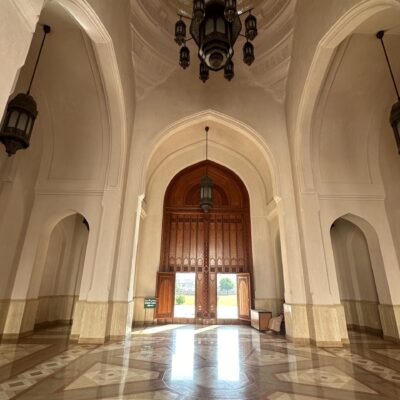
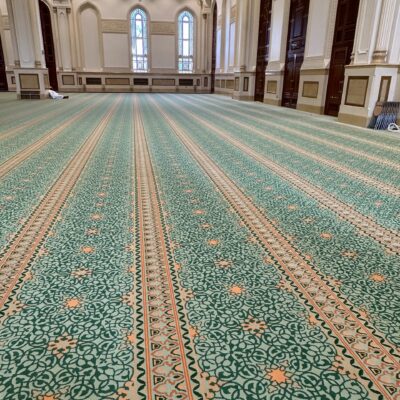
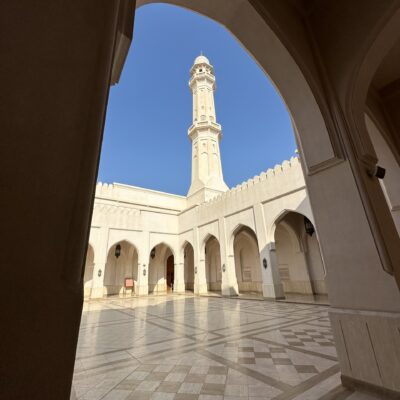

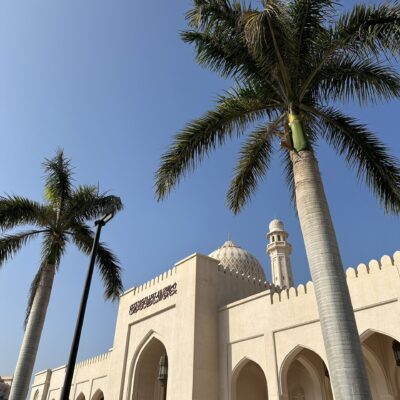
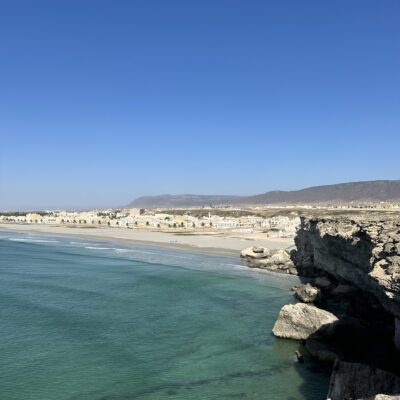
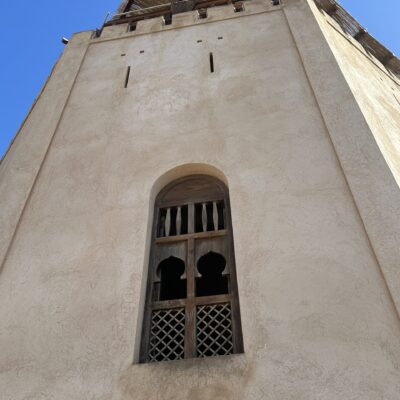
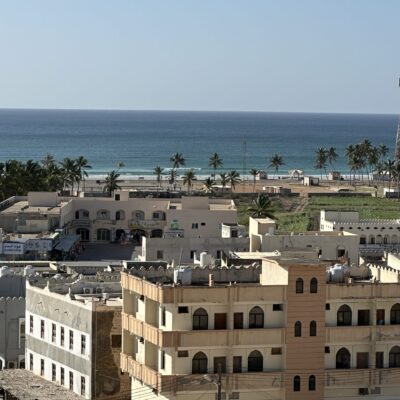
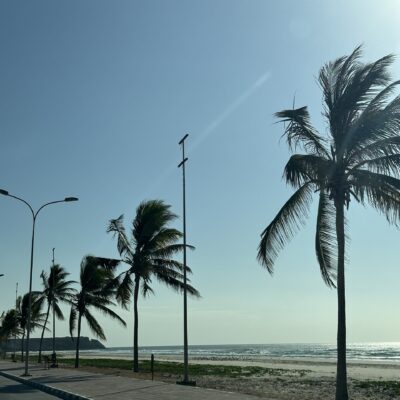
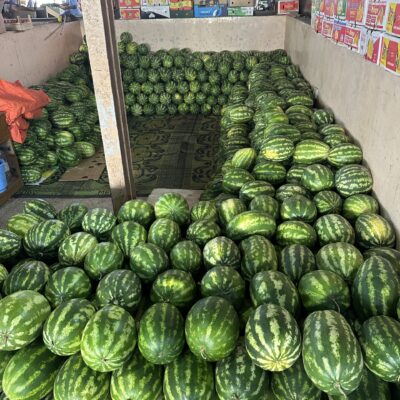
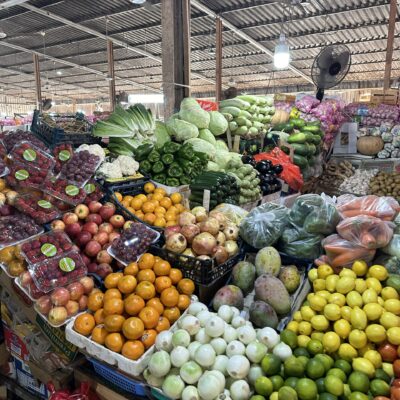
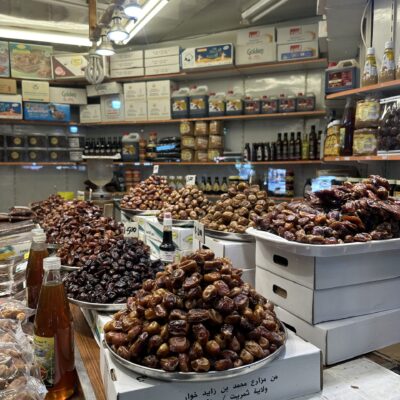
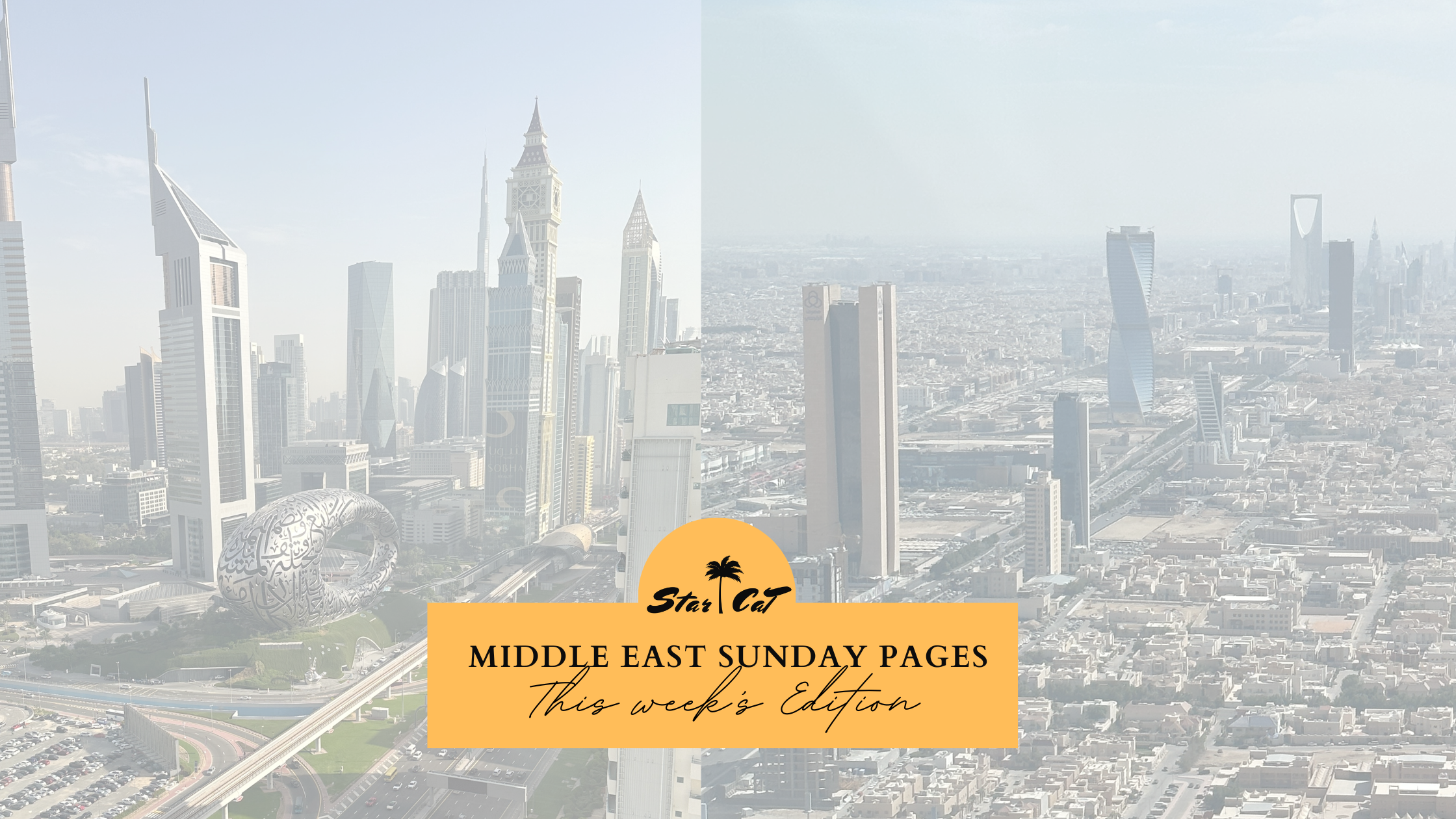


I agree “Oman Vision 2040 represents a commendable strategic framework that underscores the nation’s commitment to sustainable economic advancement beyond oil-centric reliance. By diversifying into multiple sectors such as logistics, tourism, manufacturing, and renewable energy, Oman not only mitigates the risks associated with oil dependency but also lays a robust foundation for long-term prosperity. The emphasis on public-private partnerships and foreign direct investments underscores Oman’s proactive approach in creating a conducive business environment, ensuring a steady influx of international capital and expertise. This forward-thinking vision not only aims to bolster economic resilience but also promises to generate new employment opportunities, empower SMEs, and cultivate a skilled workforce through comprehensive education and vocational training initiatives.
Oman’s Vision 2040 is a transformative roadmap that promises to elevate the nation’s economic landscape significantly. By prioritizing sectors like fisheries, mining, and technological innovation alongside traditional strengths, Oman is poised to diversify its economy effectively. This strategic focus not only enhances economic sustainability but also strengthens Oman’s global competitiveness. The vision’s commitment to human capital development through education and workforce training initiatives is particularly commendable, ensuring that Omani citizens are equipped with the skills necessary to thrive in a modern, diversified economy. Overall, Oman Vision 2040 sets a visionary course for sustainable growth and prosperity, marking Oman as a forward-looking leader in the region.
Fantastic article better information than any other source on Oman and confirms my belief of the place to be.
Will e mail separately as due to your length of time and position you might be able to guide me in directions that will aid me.
Please add in future articles that Oman behavior is more conservative than some of the other Gulf countries. Like speaking Omani Arabic, which has a certain number of varied words and methods due to the long relations with India, and Pakistan. Also, due to the strong border control there are no insurgencies or issues of major influx of illegal immigrants or prates attacks in Oman waters.
Please keep up the good work. the Oman department of communications should applaud your efforts.
Very structured information about Oman & it’s economy.